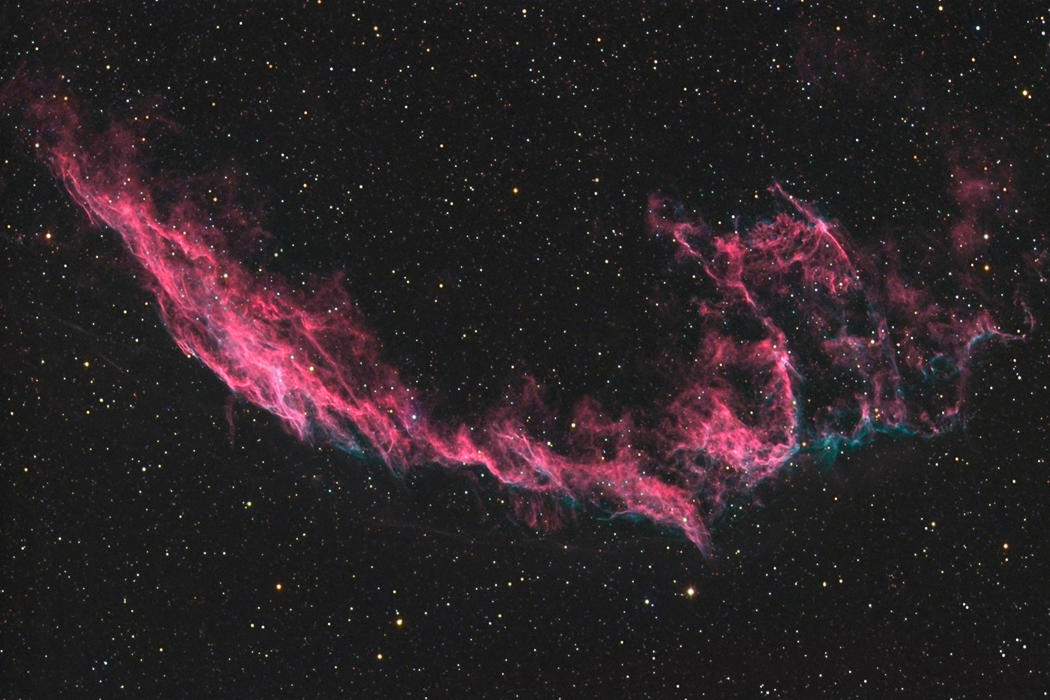Time Travel Research Center © 2005 Cetin BAL - GSM:+90 05366063183 - Turkey / Denizli
The Eastern Veil Supernova Remnant (NGC 6992)
A collaboration between Cord Scholz and Steve Cannistra

Please click here
or on image for a higher resolution view.
Please click here
for a widefield view of this region.
Characteristics:
Magnitude: Roughly magnitude 5.0
Size: about 80'
Distance: 1470 light years
RA: 20h 56m 34s
Dec: 31 degrees 43' 54"
Description:
The Eastern Veil (NGC 6992) is a supernova remnant that is part of a larger
complex that includes the Western Veil (NGC 6960). It is estimated that the
supernova explosion occured about 10,000 years ago, before the age of
recorded history. The star that gave rise to this supernova remnant is no
longer visible, but it must have been massive. During a star's life,
nuclear fusion produces elements such as oxygen, silicon, carbon, and iron.
These elements are expelled into space during supernova explosions, later
to become part of other stars, planets, and lifeforms like ourselves. The
Eastern Veil is the brightest component of the Veil Complex and contains
several subdivisions. Although relatively faint, the Veil Complex is a
stunning view at dark sites using large aperture scopes, especially with the
use of an OIII filter. Please click here for a widefield view of this
region.
Photographic Details for Ha image:
Date: June 8, 2005
Scope: Takahashi FS-102 at f6 with TOA-130 focal reducer, on the G11
Losmandy Mount.
Autoguider: SBIG STV with e-finder.
Camera: Maxcam CM10 (Finger Lakes Instruments).
Filters: Astrodon 6nm bandpass Ha filter.
Exposures: 12 x 10' each Ha. Total Ha exposure duration 2 hours. Color
data from Cord Scholz are comprised of RGB at 30:30:45 minutes, respectively.
Conditions: Temperature 80 degrees F
dropping to 65 degrees at end of session (I needed to refocus every 30
minutes); below average transparency; humid; poor seeing; intermittent
breeze. Imaging performed at -20 degrees C throughout.
Post-processing: Calibrated subs were debloomed with Ron Wodaski's
Debloomer software, and then aligned in Registar. Sigma combined using RC
Sigma Reject MaximDL, followed by DDP in ImagesPlus (IP). Subsequent levels
and curves adjustments in Photoshop CS (16 bit format). I combined my Ha
image as a luminance channel with the color data (aligned with Registar)
using routine techniques in PS. I'm impressed with the richness of Cord's
color data, and with the small stars in my luminance data (through the use
of the AstroDon 6nm bandpass Ha filter). A sharp eye will notice that the
lower right hand corner of the image lacks color, since this region was not
covered by the RGB data.